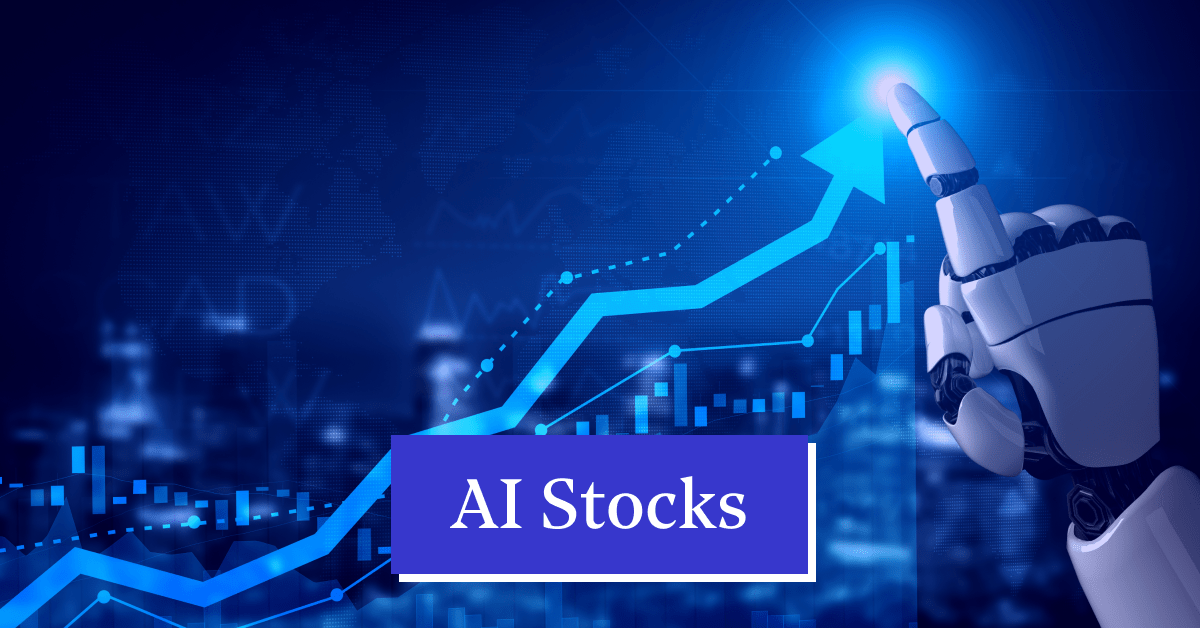20 Top Pieces Of Advice For Choosing Investment Ai
Wiki Article
Top 10 Tips To Automate Trading And Monitoring Regularly Trading In Stocks From Penny To copyright
In order for AI stock trading to be successful, it's vital to automatize trading and keep a constant eye on. This is especially true for markets that are volatile like copyright or penny stocks. Here are 10 great suggestions for automating trades and monitoring your performance regularly.
1. Clear Trading Goals
Tips: Determine your trading goals, which include risk tolerance, expected returns, and asset preferences.
Why: A clear goal determines the choice of an AI algorithm rules for risk management, as well as trading strategies.
2. Use a trusted AI Trading Platform
Tip #1: Use AI-powered platforms to automate and connect your trading into your copyright exchange or brokerage. Examples include:
For Penny Stocks: MetaTrader, QuantConnect, Alpaca.
For copyright: 3Commas, Cryptohopper, TradeSanta.
What is the reason? Automation success relies on a strong platform and ability to execute.
3. Customizable Trading Strategies are the Focus
Tips: Select platforms that allow you to develop and modify trading algorithms customized to your strategy.
Why? The flexible algorithm allows you to customize the strategy to fit your individual trading style.
4. Automate Risk Management
Tips: Set-up automated risk management tools, such as stop-loss orders, trailing stops, and take-profit levels.
Why? These safeguards will protect you from big loss in volatile markets including penny stocks and copyright.
5. Backtest Strategies Before Automation
Tips: Prior to going live with your automated strategy You should test it with the past data.
Why: Backtesting helps to determine if a strategy is feasible, thereby reducing the possibility of bad performance in live markets.
6. Check regularly for performance and adjust settings
Although trading is automated however, it is important to check the performance of your trading regularly to identify any issues.
What to Track What to Track: Slippage, profit loss and whether algorithm is aligned with market conditions.
The reason: a continuous monitoring process lets you adjust your strategy in the moment if conditions on the market change. You can then make sure that your strategy is still effective.
7. Implement adaptive algorithms
TIP: Pick AI tools that are able to adapt to market conditions that change by adjusting trading parameters based on real-time data.
The reason: Markets are constantly changing and adaptive algorithms are able to align strategies for penny stocks and copyright to new trends, volatility or other factors.
8. Avoid Over-Optimization (Overfitting)
TIP: Beware of over-optimizing your system using data from the past which could result in overfitting (the system is able to perform very well in backtests, but not under real-world situations).
The reason is that overfitting reduces the strategies generalization to market conditions in the future.
9. Make use of AI to detect market anomalies
Tips: Use AI to identify odd market patterns or unusual abnormalities in data (e.g. sudden spikes in trading volume news sentiment, or copyright whale activity).
Why: By recognizing these signals early, you are able to adjust your automated strategies ahead of a significant market movement.
10. Incorporate AI into regular notifications and alerts
Tip: Set alerts that are real-time to be notified of significant market events such as trading executions, or any changes in algorithm performance.
Why: Alerts keep you informed of crucial market changes and permit quick manual intervention if necessary (especially in volatile markets like copyright).
Bonus: Use Cloud-Based Solutions for Scalability
Tips: Make use of cloud-based platforms to boost scalability and speed. You can also use multiple strategies simultaneously.
Why: Cloud solutions allow your trading platform to run all the time, without interruption, which is especially essential for copyright markets, which never close.
Automating and monitoring your trading strategies you can maximize efficiency and reduce risk by making use of AI to power copyright and stock trading. Take a look at the top rated read this post here for trading chart ai for blog tips including ai stock trading app, smart stocks ai, best ai stocks, ai stock predictions, ai trading bot, ai investing platform, ai for stock trading, ai for investing, trade ai, ai stock price prediction and more.

Top 10 Tips To Monitor The Market's Sentiment Using Ai To Pick Stocks Predictions, Investing And Predictions
Market sentiment monitoring is essential for AI stock predictions, investment and picking. Market sentiment has an enormous influence on the market and overall trends. AI-powered tools can analyze huge amounts of information to extract indicators of sentiment from various sources. Here are 10 top AI strategies for monitoring market sentiment to help you select stocks:
1. Utilize Natural Language Processing (NLP) to perform Sentiment Analysis
Tips: Make use of Artificial Intelligence-driven Natural Language Processing (NLP) techniques to analyze text from news articles and financial blogs, earnings reports, as well as social media sites (e.g., Twitter, Reddit) to assess sentiment.
The reason: NLP enables AI to comprehend and quantify feelings, opinions, and market sentiments expressed in unstructured text. This allows for real-time sentiment analysis that can inform trading decisions.
2. Monitor Social Media & News for signals of sentiment in Real Time
Tips: Develop AI algorithms that scrape data live from forums, social media and news websites to track the sentiment changes in relation to market events, and other factors.
Why is that social media and news influence the market quickly, particularly when it comes to volatile assets like penny stocks and copyright. Real-time emotion analysis can give useful insights into short-term trade choices.
3. Machine Learning and Sentiment Analysis: Combine the Two
Tips: You can utilize machine learning algorithms to predict the future trends of market sentiment using historical information, signals of sentiment and price fluctuations (e.g. related to social media or news).
What is the reason: Through learning patterns in sentiment data as well as previous stock movements, AI can forecast sentiment changes that could precede major price fluctuations, providing investors an edge in their predictions.
4. Combine Sentiment with Technical and Fundamental Data
Tip: To create an effective investment strategy Combining sentiment analysis with technical indicators like moving averages, RSI and fundamental metrics such as earnings reports, P/E or earnings ratios.
The reason is that sentiment adds an additional layer of information to the technical and fundamental analysis. Combining these factors enhances the AI's capacity to make more accurate and balanced stock forecasts.
5. Track Sentiment Changes During Earnings Reports and other important events
Use AI to track the shifts in sentiment that happen prior to and/or following major events such as earnings releases and product launch announcements, or regulatory updates. These could have significant influences on stock prices.
What's the reason? These events are usually the catalysts for significant changes in market sentiment. AI can spot changes in sentiment quickly, and provide investors with insights into potential stock movements in response to these events.
6. Focus on Sentiment Arrays to identify current market trends
Tips: Cluster sentiment data to determine broad market trends, segments or stocks that have either a positive or negative outlook.
The reason: Sentiment clustering enables AI to spot emerging trends that may not be evident from individual stocks or small data sets, allowing you to determine industries or sectors that are experiencing changing investor interest.
7. Utilize sentiment scoring to aid in stock valuation
Tips: Create sentiment scores for stocks using analysis from websites or news sources. Utilize these scores to sort and classify stocks based on positive or negatively slanted sentiment.
Why are they important? They provide an effective way of measuring the mood in the market for a particular stock. They aid in decision-making. AI can refine the scores as time passes in order to improve predictive accuracy.
8. Track Investor Sentiment across Multiple Platforms
TIP: Monitor the sentiment across multiple platforms (Twitter Financial news sites, Twitter, Reddit, etc.). Examine the sentiments of various sources, and you'll get a better overall view.
What's the reason? The sentiment could be distorted or incomplete on one platform. Monitoring investor sentiment across platforms will give a more accurate and balanced picture.
9. Detect Sudden Sentiment Shifts Using AI Alerts
Create AI alerts to notify you of any significant changes in sentiment towards a particular sector or stock.
Why: Sudden sentiment changes, such as a large spike in positive or negative mentions, could precede swift price fluctuations. AI alerts enable investors to react quickly, and before the market price changes.
10. Analyze long-term sentiment trends
Tips: Make use of AI to help you analyze longer-term trends in sentiments for stocks, industries and the market in general.
What's the reason? The long-term trend in sentiment can be used to pinpoint stocks that have strong future prospect, or to alert investors to the possibility of new dangers. This broader view complements shorter-term sentiment indicators and can determine long-term investment strategies.
Bonus: Combine Sentiment with Economic Indicators
TIP: Combining sentiment analysis with macroeconomic data such as GDP, inflation, and employment statistics can help you understand how the overall economic climate affects sentiment.
What's the reason? Economic conditions can have a an impact on investor sentiment, and consequently, the price of stocks. By linking sentiment with economic indicators, AI can provide deeper insight into the market's changes.
These guidelines will allow investors use AI effectively to understand and analyze market sentiment. They will then be able to make better informed stock choices as well as investment forecasts and make better decisions. Sentiment analysis offers an unmatched in-depth, real-time analysis that complements traditional analysis, helping AI stock pickers navigate complex market conditions with greater accuracy. Have a look at the most popular agree with on ai stock prediction for website examples including ai trading, ai stock prediction, ai trading software, ai stock trading, best ai trading bot, trading chart ai, trading with ai, ai stock prediction, ai penny stocks to buy, ai investing and more.
